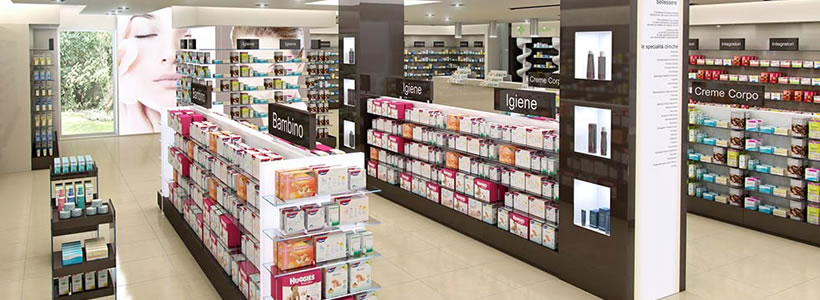
March 28, 2025
In Malaysia’s fast-evolving healthcare landscape, branding has become more than just a logo or product name — it’s a powerful way to build trust, loyalty, and recognition. As pharmaceutical companies compete for consumer attention, effective merchandising emerges as a critical strategy to elevate their brand in the retail setting. This is particularly true for stakeholders like the independent pharmacy distributor, pharmacy wholesale distributors, and pharmacy distributor Malaysia networks who operate in a highly fragmented yet competitive industry.
In this article, we’ll explore how effective merchandising — especially through pharmaceutical display solutions — supports pharmaceutical branding by enhancing visibility and strengthening consumer trust.

Pharmaceutical branding refers to the strategic efforts to create a strong, memorable identity for a medication or healthcare product. It includes not only the name and packaging, but also the messaging, perceived quality, and emotional connections that consumers form with the product. Branding is crucial in Malaysia, where both prescription and over-the-counter (OTC) markets are growing steadily.
With multiple options on the shelves, pharmacy branding strategies become essential to influence customer decisions at the point of purchase.
Malaysia’s pharmaceutical distribution space is crowded, and many products compete in similar categories. For pharmacy distributor Malaysia companies, one of the biggest challenges is visibility — how to make a product stand out among many, especially in a retail pharmacy. This is further complicated by limited shelf space, regulatory constraints, and the need to maintain consistency in branding across various outlets.
Another challenge is differentiation. Many generic products look alike, making in-store marketing and branding the key battlegrounds for customer attention.
In healthcare, perception is everything. Consumers are more likely to trust products that appear well-organized, professionally presented, and supported by recognized branding. A product’s visual impact on the shelf can subconsciously influence how consumers perceive its effectiveness and safety. Therefore, branding through healthcare product placement and display becomes critical to earning customer trust.
Learn more: Key Trends Shaping Pharmacy Merchandising Services in Malaysia | Community Pharmacy Practice in Malaysia: A Review | Factors Attracting Consumers to Visit Community Pharmacies in Malaysia

Merchandising in the pharmaceutical context refers to the strategic arrangement and presentation of healthcare products in retail and wholesale settings to influence customer purchasing behavior. It includes the use of pharmaceutical display solutions, signage, shelf talkers, and lighting to create an inviting and informative experience for customers.
Core principles of merchandising include:
Strategic product positioning
Visibility optimization
Consistency with brand messaging
Customer-centric layout design
Product Placement: Strategic healthcare product placement can guide consumers through high-interest areas like OTC products, vitamins, or skincare. Eye-level placement significantly boosts visibility and sales.
Signage and Branding: Clear, well-designed signage reinforces product benefits and brand identity. QR codes, educational blurbs, and category-specific colors help customers make informed decisions.
Shelf Layout: Efficient shelf management ensures that popular products are readily available and organized, reducing clutter and improving navigation.
Branded Displays: Custom pharmaceutical display solutions act as mini-brand billboards, drawing attention and educating customers at the same time.
While merchandising is more visible in retail settings, its role is equally crucial in the wholesale space. Distributors often provide merchandising tools to pharmacies, helping them set up standardized displays that maintain brand integrity across multiple locations.
Retail pharmacy design guided by distributor support helps create consistency in how products are experienced by end consumers.
Branded product displays are designed to break through the visual noise of the retail environment. They create a distinct space for the product, differentiating it from generic competitors. This type of in-store marketing serves as both advertisement and product shelf, giving brands greater control over presentation.
Whether it’s a freestanding unit or a countertop display, these structures boost OTC product visibility and keep the brand top-of-mind for shoppers.
Repeated exposure to branded elements — logos, color schemes, taglines — helps cement brand recall. In pharmacies, where customers often look for familiarity when purchasing health-related products, strong display branding fosters confidence and encourages repeat purchases.
Moreover, professionally presented displays suggest that the brand is established and trustworthy — a psychological cue that can drive conversions and foster long-term pharmacy customer engagement.
Endcap Promotions: Positioning seasonal or high-margin products on endcaps (end-of-aisle displays) to capture attention.
Cross-Merchandising: Placing complementary products (e.g., cold medicine with tissues and vitamins) together for convenience.
Point-of-Sale Promotions: Using checkout counters for impulse buys such as lozenges or sanitizers with eye-catching point-of-sale promotions.
These tactics not only increase sales but also strengthen the presence of the brand across the retail journey.
Learn more: The Importance of Visual Merchandising for Pharmacies in Malaysia | Retail Merchandising Ideas for Pharmacies

A well-maintained display communicates professionalism and attention to detail — qualities that are essential in the healthcare space. Customers tend to avoid messy or disorganized shelves, associating them with poor product quality. Clean merchandising helps establish trust in both the product and the pharmacy as a whole.
Consistency across locations and displays reinforces credibility. If a consumer sees the same high-quality branding in different pharmacies, it builds familiarity and perceived reliability. This is especially important for pharmacy wholesale distributors supplying to multiple independent outlets.
For independent pharmacy distributors, merchandising is a direct communication tool between them and the end user. Distributors can provide pharmacies with pre-designed branded kits, ensuring that their products are not just available, but also presented in a way that supports the overall brand message. In this sense, merchandising serves as the final leg of a well-executed pharmaceutical marketing Malaysia strategy.
Learn more: The Role of Pharmacy Merchandising in Enhancing Customer Experience | In-Pharmacy Marketing Ideas to Enhance Patient Experience
Independent pharmacy distributors often have closer relationships with community pharmacies. This allows them to provide tailored merchandising support, such as custom shelf setups or training on product placement. These personalized services help ensure that smaller pharmacies can still compete visually with larger retail chains.
Larger wholesale distributors typically offer a suite of branded merchandising materials, including posters, digital displays, and counter stands. These resources help maintain branding consistency while easing the burden on pharmacy staff.
This support also strengthens relationships between distributors and pharmacies, positioning the distributor not just as a supplier, but as a strategic partner in sales and marketing.
Collaborative planning between distributors and retailers ensures that merchandising strategies align with store layout, target audience, and sales goals. For example, pharmacy distributor Malaysia networks may share sales data and customer insights with retail partners to determine the most effective merchandising formats. This data-driven approach improves ROI and customer satisfaction.

A local distributor partnered with 50 independent pharmacies to install branded display stands for a new range of supplements. After three months, brand recall improved by 45%, and sales doubled.
A major pharmacy chain in Kuala Lumpur implemented digital displays to promote seasonal wellness products. The result was a 30% increase in customer engagement in those sections, tracked through digital interactions.
Rotate Displays Regularly: Change promotional displays every few weeks to keep content fresh and engaging.
Utilize Data: Use sales data to understand which displays drive conversions, and optimize placement accordingly.
Educate Staff: Train pharmacy staff on product benefits so they can reinforce the messaging during customer interactions.
Optimize Lighting and Color: Bright, well-lit displays attract more attention and help products stand out.
Maximize Point-of-Sale Areas: Use checkout counters for last-minute impulse buys using branded mini-stands.
Effective merchandising is no longer optional in Malaysia’s dynamic pharmaceutical market — it’s essential for building trust, increasing visibility, and supporting brand growth. From branded product displays to strategic shelf management, the right merchandising techniques can transform how customers interact with and perceive healthcare products.
For independent pharmacy distributors, pharmacy wholesale distributors, and pharmacy distributor Malaysia businesses, investing in merchandising is an investment in long-term brand equity. By working closely with pharmacies and leveraging tailored pharmaceutical display solutions, distributors can ensure their products don’t just sit on the shelves — they shine.
Looking to elevate your pharmaceutical brand through effective merchandising?
Contact us today to learn how PriooCare can support your pharmacy with professional merchandising tools, branded displays, and strategic distribution solutions that drive visibility and trust.